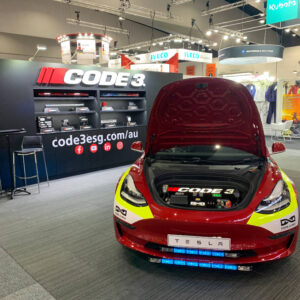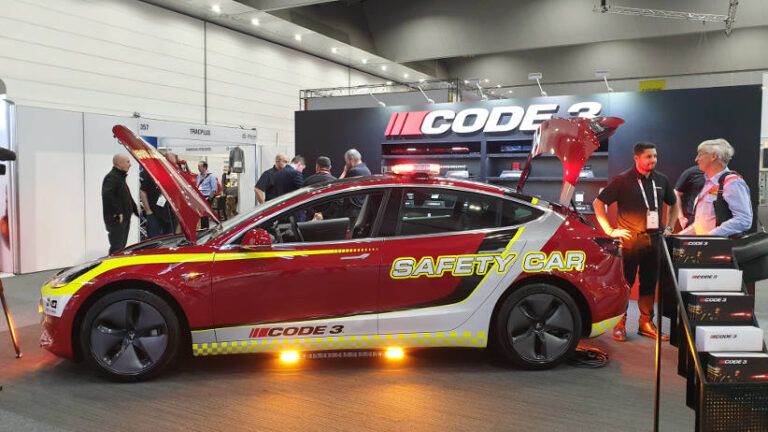Code 3 has been operating since 1972, supplying local Police, Fire & Rescue, and Ambulance fleets with high performance emergency systems which includes LED lightbars, beacons, sirens, speakers, LED emergency lighting, digital video systems and scene lighting solutions. We have a long and proud history of providing innovative products, including some of today’s most advanced LED lighting technologies such as the Pursuit Lightbar and we’re excited to introduce the next generation of warning products with the Code 3 DNA (Distributed Network Architecture) system.
 The Australian Code 3 Engineering team developed Code 3 DNA from concept to production. This has become an industry leading system that allows all compatible devices on an emergency vehicle to operate as a single, cohesive warning system, without the need for a dedicated “master” control unit commonly required by competing systems. Code 3 DNA allows products to interact more intelligently to provide unique warning and safety features, simplifying the operation for the user while reducing the complexity of the electrical installation.
The Australian Code 3 Engineering team developed Code 3 DNA from concept to production. This has become an industry leading system that allows all compatible devices on an emergency vehicle to operate as a single, cohesive warning system, without the need for a dedicated “master” control unit commonly required by competing systems. Code 3 DNA allows products to interact more intelligently to provide unique warning and safety features, simplifying the operation for the user while reducing the complexity of the electrical installation.
This distributed intelligence allows maximum flexibility for both very simple and very complex installations. A push towards a more integrated installation of emergency vehicle lights and sirens has led to smarter levels of warning system co-ordination and simplified operation for the end user.
Working closely with a number of customers during the development phase, numerous common emerging features were identified that could lead to standardising the operation of emergency vehicle warning systems. Some of these are outlined below.
Siren + Lights Integrated Operation
When an emergency vehicle encounters heavier traffic with the lights already operating with a standard alternating flash pattern and slower siren “wail” tone, more warning of the presence of the vehicle may be required. To emphasise this call for right-of-way to other road users, the operator can tap the vehicle horn to switch the lights to a higher output “Hyperflash” lightbar pattern and simultaneously change the siren to a fast “Yelp” tone on one channel. Once clear of the traffic, tap the horn again to revert to the previous operating state.
Intersection Clearing
As an emergency vehicle approaches and passes through an intersection, the maximum level of warning can be beneficial for a short period of time. The C3-DNA system allows the operator to activate “intersection clearing” mode – for example, by holding the vehicle horn for a short period of time. Once activated, the siren will change the output on one of the speakers to emit a low-frequency tone, designed to penetrate the sound absorbing cabins of modern vehicles and alert their drivers. At the same time, the lightbar will switch to an intersection clearing pattern, with a burst of the highest light output available, including intense white light. After 8 seconds, the lights and siren automatically return to their previous operating state with no additional input required from the user.
Airhorn-Assist Mode
To instantly alert other road users to the presence of the emergency vehicle, press and hold the vehicle horn at any time to activate both the siren Airhorn tone and a highly visible forward-facing lightbar pattern.
Manual / Pull-Over Mode
Activated through C3-DNA controllers, pressing the Manual button will temporarily activate a wail tone in addition to a flash pattern on the lightbar, only while sound is emitting.
Door-Open
When the status of the doors, bonnet and boot are available on the network, several functions can be realised. Bright flashing lights directly around the door area can temporarily be turned off to reduce the distraction to the officer as they exit the vehicle. Boot mounted warning lights can be activated only when the boot is open. Siren volume can be reduced to safe levels when the bonnet is open for workshop testing.
Backed by the support of a local dedicated team of Code 3 engineers, C3DNA empowers the customer with the ability to overhaul how they think about emergency vehicle warning system operation and integration – with benefits in safety, practicality and simplicity of installation. The possibilities are exciting.






